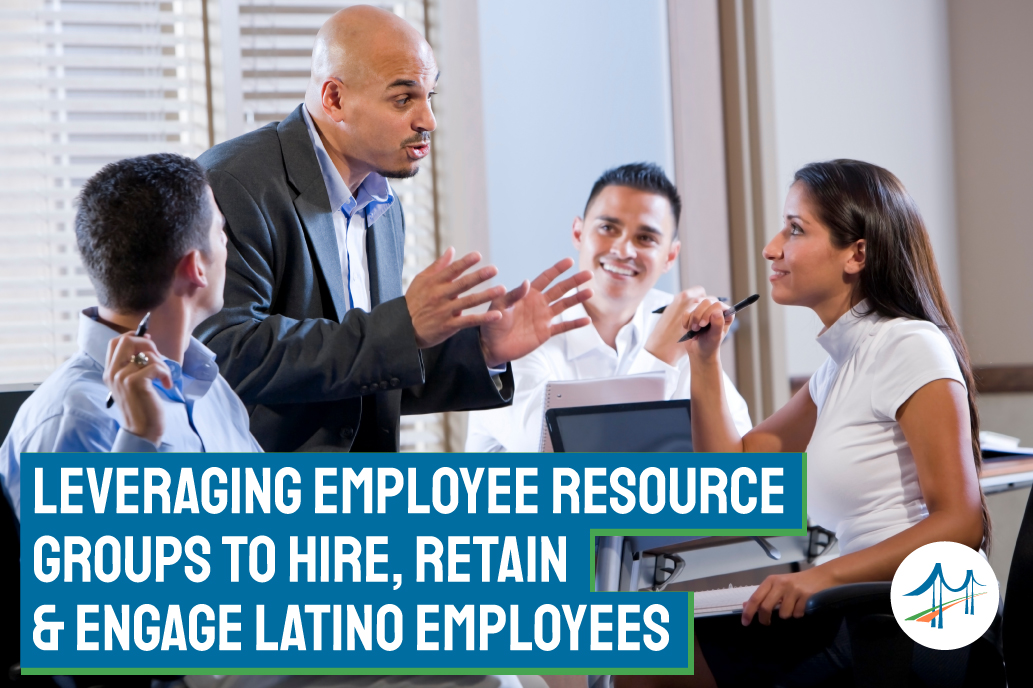As organizations continue to prioritize diversity and inclusion in the workplace, Employee Resource Groups (ERGs) have become an increasingly popular tool for engaging and retaining employees from diverse backgrounds and Latinos are no exception.
A study by McKinsey & Company found that companies that have a high level of diversity in terms of gender and ethnicity tend to have better financial performance compared to the industry average.
ERGs, also known as affinity groups, were created in the 1960s as a response to the social and racial conflicts that emerged during that time, and since then, have become a staple in most organizations, with over 90% of companies reporting having ERGs.
ERGs are groups within an organization that are designed to support and promote the interests of a particular group of employees. The members join voluntarily, to build a network with similar characteristics while fostering a sense of belonging and acceptance. Some of those shared characteristics might include race, age, religion, social causes, gender, nationality, and common interests.
Tapping into the Benefits of ERG Groups
A key benefit of ERGs is that they provide a sense of belonging and community for employees who may feel isolated or disconnected from the broader organizational culture, especially if they are a minority within the organization. For Latino employees, ERGs can provide a space to connect with others who share similar backgrounds and experiences. This can be especially important for organizations that are working to improve their diversity and inclusion efforts, as it can help to ensure that the voices and experiences of all employees are heard and valued.
ERGs can also serve as a source of support and guidance for employees. For some Latino employees, navigating the corporate world can be challenging, particularly if they are new to the organization or are facing unique challenges related to their cultural background. ERGs can provide a supportive network of peers and mentors who can offer guidance and advice on career development, acculturation, or work-life balance.
ERGs can be an effective tool for engaging and retaining top talent within the organization, particularly those from underrepresented groups. Engaged and satisfied employees are more likely to stay with an organization for the long term, and ERGs can help to create a more supportive work environment that promotes personal and professional growth.
Employee Resource Groups can help an organization identify and develop future leaders by providing professional development and training opportunities, including leadership development. Furthermore, individuals with potential can lead ERG projects and showcase their talent to gain additional visibility within the organization.
Many ERGs often engage in community service and volunteer activities, increasing brand exposure.
ERG members also serve as advocates and representatives of their respective communities, by offering market research insights on consumer behaviors through personal experience, input on product and service development, as well as serving as organizational ambassadors.
Best Practices to Leverage ERG Groups
ERGs are often underutilized and under-resourced. Organizations can significantly increase employee retention while accessing a valuable source for brand representation and consumer input. Here are some recommended best practices:
1. Clear goals and objectives: ERGs should have specific, measurable goals and objectives that align well with the organization’s overall mission and strategy.
2. Communication and collaboration: Senior leaders and ERG leaders should be communicating often and clearly regarding initiatives, projects, and inter-departmental collaboration. Celebrating and announcing significant ERG milestones and accomplishments is another strategic practice to acknowledge the efforts of the ERG members and reinforces the valuable contributions to the organization.
3. Executive support: Senior leaders should provide visible and consistent support to ERGs. Including hosting and/or participating in events, facilitating mentoring programs, actively guiding and inviting fellow leaders to become involved.
4. Adequate resources: To reap the benefits of ERGs, sufficient resources must be allocated, including funding, staff support, training and development opportunities. And time; members should be granted appropriate time to actively participate in the projects and activities facilitated by the ERG.
Don’t have an ERG? Or is the existing ERG stagnant and ineffective? We can help.
As leading experts in Hispanic Engagement, we can help develop effective strategies and tactics to launch a brand-new ERG or revamp a current program. Our practical knowledge of the complexities of the Latino segment, in particular the Latino employee, can help address and overcome many hiring, retention and engagement challenges. Additionally, our Latino recruitment support and professional development training, customized to your particular industry and needs, will fill open positions with highly talented candidates, while supporting your DEI objectives. We can help.
Image: ©[Kablonk Micro] via Adobe Stock


